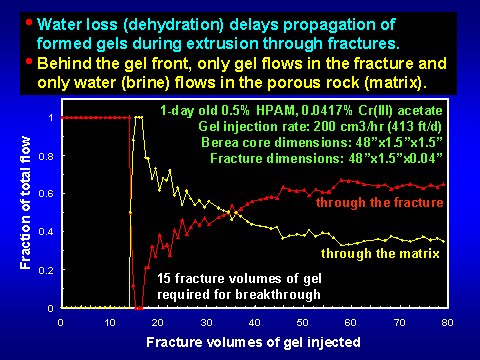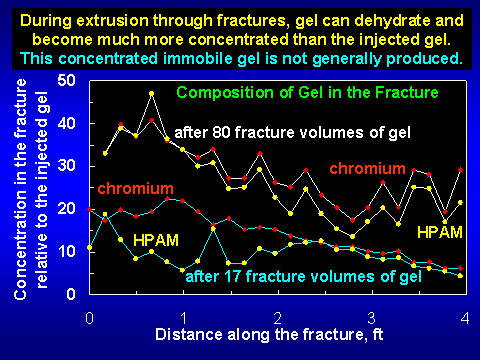Water Can Leak, Crosslinked Polymer Can't
Before gelation, fluid gelant solutions can readily leakoff from fractures into porous rock. However, after gelation, the crosslinked materials will not penetrate significantly into the porous rock. Thus, formed gels must extrude through fractures during the placement process. In other words, the crosslinked polymer moves through the fracture as a semi-solid and does not penetrate past the fracture faces into the porous rock.

Cr(III)-acetate-HPAM gels (as well as other gels) concentrate or lose water during extrusion through fractures, reducing the rate of gel propagation (Figure 1 above). When large volumes of gel were extruded through a fracture, the effluent had the same appearance and a similar composition as those for the injected gel (Figure 2), even though a concentrated, immobile gel formed in the fracture (Figure 3).

During gel extrusion, water leaked off from the gel, and the gel concentrated to become immobile in the vicinity where dehydration occurred. Crosslinked polymer did not penetrate significantly into the porous rock. The driving force for gel dehydration (and water leakoff) was the pressure difference between the fracture and the adjacent porous rock. Fresh gel (i.e., mobile gel, with the original composition) wormholed through the concentrated gel in order to advance the gel front. With time at a given position along the fracture, the average gel concentration increased (see Figure 3), and the fracture area contacted by wormholes (i.e., mobile gel) decreased. Even so, water leakoff from the concentrated, immobile gel was generally small compared with leakoff from the mobile gel.
